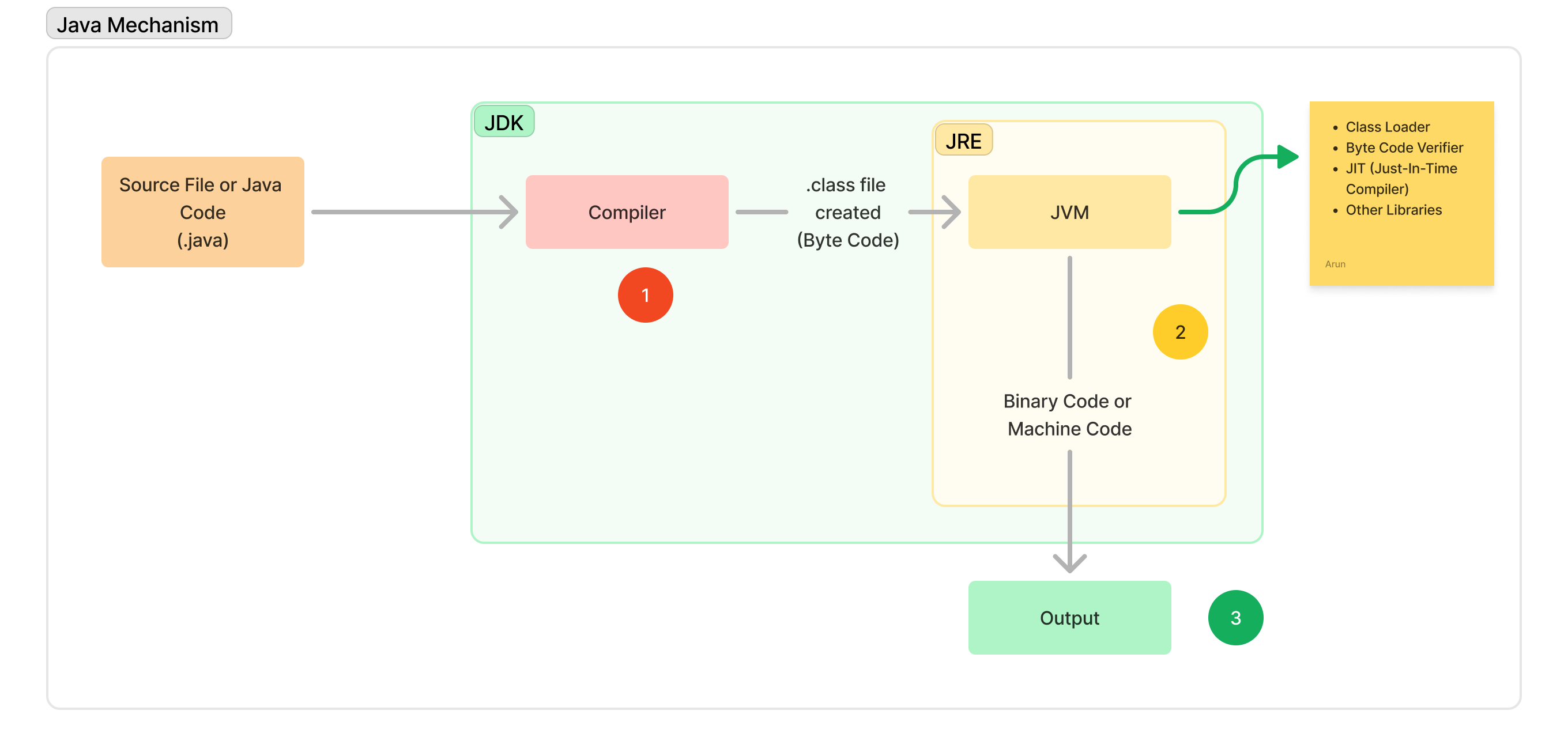🧠 What is a Programming Language?
- A language (translator) is used to write a program.
- Coding: Writing code in a human-readable language that can be translated to machine code.
💻 Java Language Overview
- Java is a strictly typed programming language.
- Follows syntax rules and regulations.
- It is a statically typed language, meaning:
- Data types must be explicitly declared.
- Compiler checks types during compile-time.
🔄 Java Code Execution Flow
- Write Program (Source Code) →
.java - Compiler (javac) translates source code into Bytecode →
.class - Bytecode is platform-independent.
- Bytecode is executed using the Java Virtual Machine (JVM).

🧰 Java Components Explained
| Component | Description |
|---|---|
| JDK (Java Development Kit) | Full Java development toolkit (includes JRE + development tools like compiler) |
| JRE (Java Runtime Environment) | Used to run Java applications (includes JVM + libraries) |
| JVM (Java Virtual Machine) | Converts bytecode into machine code and executes it |
JDK
└── JRE
└── JVM
🧑🔬 History and Ownership
- Java was introduced by: James Gosling
- Originally developed by: Sun Microsystems
- Currently owned by: Oracle
🔁 JVM Responsibility
- Takes care of the conversion of bytecode to machine-level code.
- Provides platform independence by allowing code to run on any machine with a compatible JVM.